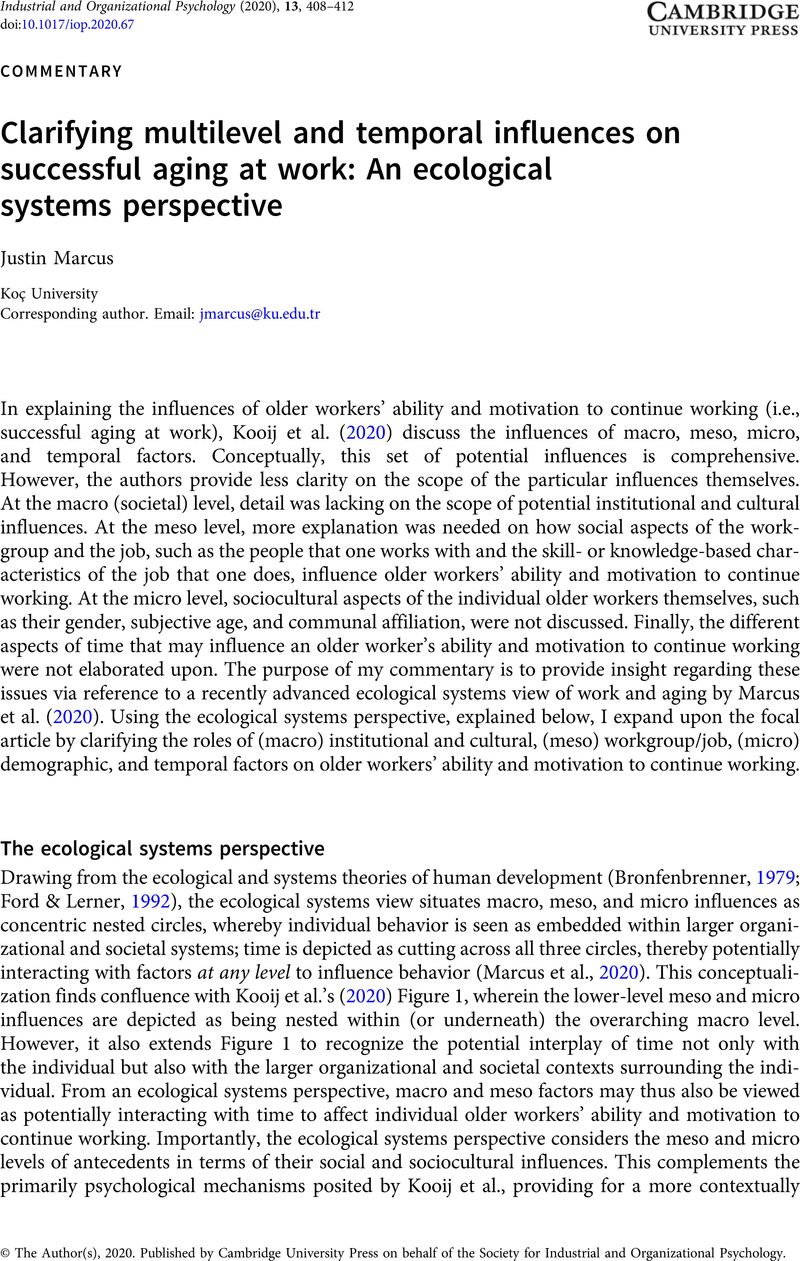Crossref Citations
This article has been cited by the following publications. This list is generated based on data provided by Crossref.
Marcus, Justin
and
Wang, Mo
2022.
The Confluence of Culture and Ageism at Work.
Work, Aging and Retirement,
Vol. 8,
Issue. 4,
p.
352.
Lee, Yeonjung Jane
Lau, Sophia B.
Bersamira, Clifford S.
and
Yamauchi, Jaron
2023.
Anti-Asian Racism and COVID-19 Impact on Older Adults: The Voices of Social Workers.
Journal of Gerontological Social Work,
Vol. 66,
Issue. 8,
p.
985.
Taneva, Stanimira K.
and
Peng, Yisheng
2023.
Fostering successful ageing at work: The role of cognitive job crafting, work certainty and perceived remaining time at work.
Journal of Occupational and Organizational Psychology,





